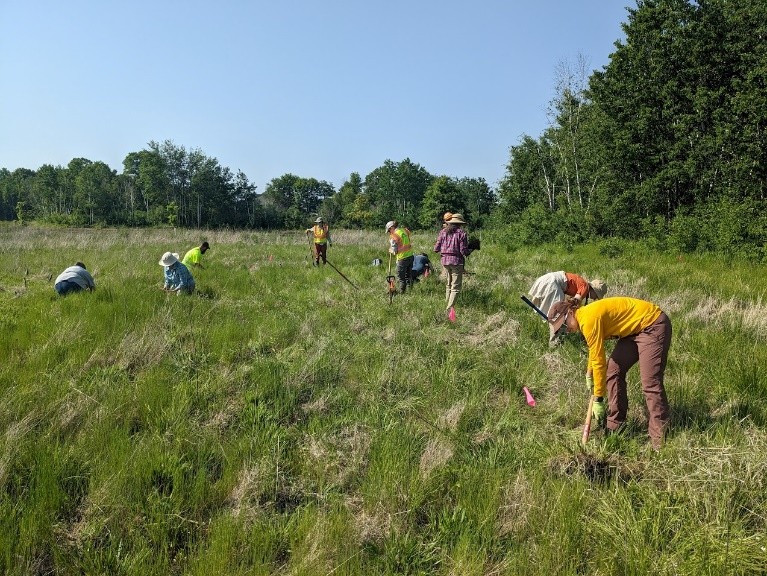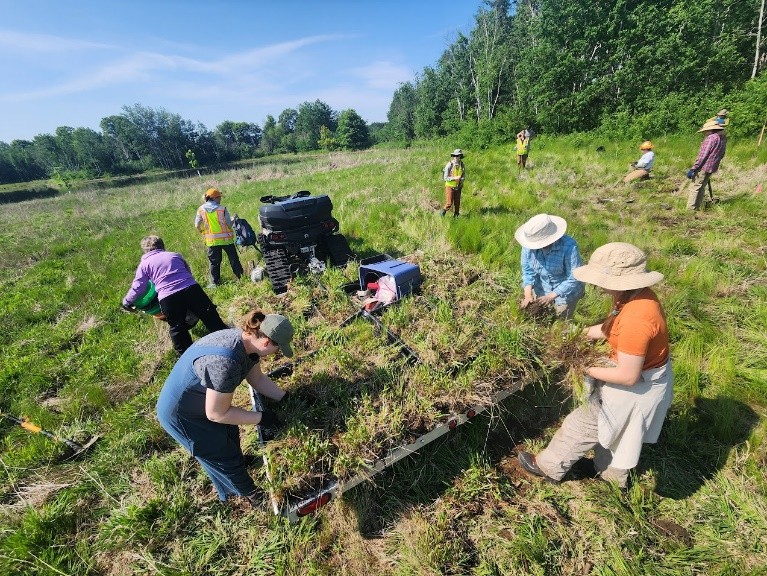ACD is collaborating with Anoka County Parks to enhance wetland basins in the Cedar Creek Conservation Area. Efforts are underway to increase plant diversity and to shift the wetland plant communities to sedge meadow and wet meadow. Both basins were initially dominated by reed canary grass. In 2021, two sheet pile plugs were installed in the ditch system and reed canary grass scrapes occurred in the east side basin (see map below). Native plants emerged where reed canary grass was scraped away. Management including mowing, spot herbicide treatment and seeding continue in this area to increase plant diversity.
Photo: Map of Cedar Creek Conservation Area,
showing ditch-plug and reed canary grass management locations.
Photo: Wetland Basin in Cedar Creek Conservation Area.
The upland – wetland basin in the CCCA has the potential to be restored to native dry prairie and sedge meadow habitats. Many of the remaining sedge meadows are often only fragmented narrow strips, adjacent to non-native cattails, making them difficult to manage. It is feasible to create a burn break around this unique wet meadow and prairie habitat to restore and maintain the plant communities. There is an opportunity to include this area with an adjacent dry prairie that is part of a regularly scheduled prescribed burn management plan. Additionally, the soil type along the wetland margin in this basin are known to support rare plant species. Once restored, this site could be a recipient site for rescued rare plants. For more information contact Carrie Taylor,Restoration Ecologist, at This email address is being protected from spambots. You need JavaScript enabled to view it.














